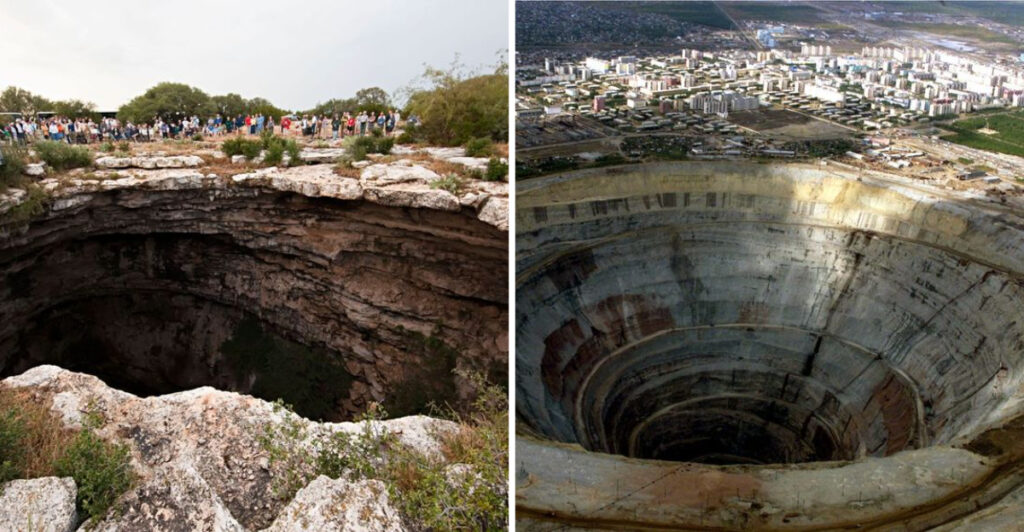Explore the mysteries concealed within Earth’s deepest trenches. Recent discoveries have unearthed astonishing secrets, from historical artifacts to unknown ecosystems, each hole offering a unique glimpse into our planet’s hidden wonders. As scientists delve deeper, they uncover tales that challenge our understanding of history, nature, and geology. In this post, we will journey through 19 of the world’s most intriguing deep holes, each revealing secrets that captivate the imagination and expand the horizons of scientific knowledge. Prepare to be amazed by what lies beneath the Earth’s surface.
The Kola Superdeep Borehole
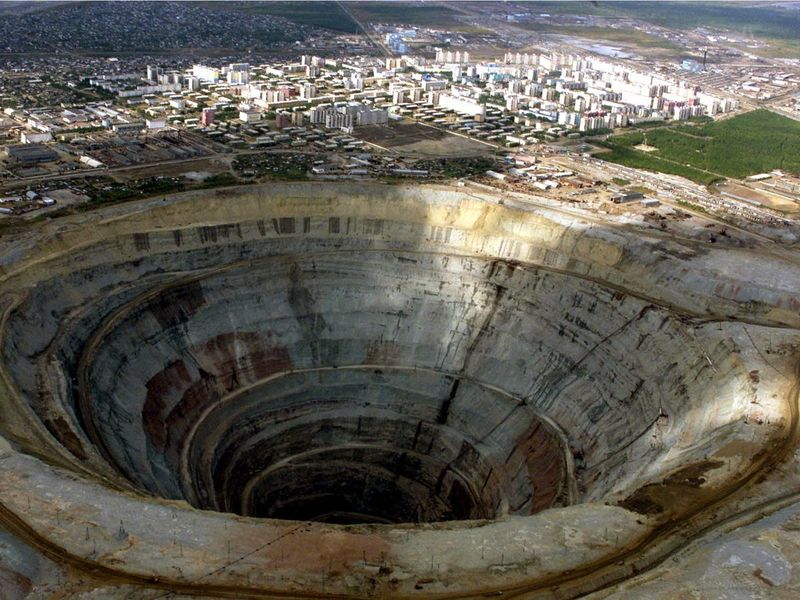
At the heart of Russia lies the Kola Superdeep Borehole, a testament to mankind’s quest to understand the Earth’s crust. Stretching over 12 kilometers deep, this hole holds more than just rock and soil. Scientists were astounded to discover traces of microscopic plankton fossils, remnants of an ancient ocean.
The borehole also revealed temperatures exceeding 180°C, challenging previous geological models. The intense heat warped their drilling equipment, yet they pressed on, eager to unveil further secrets.
This monumental endeavor, halted in 1989, remains a symbol of human curiosity and determination.
The Mariana Trench

Deep beneath the Pacific Ocean, the Mariana Trench extends nearly 11 kilometers down, shrouded in mystery. Recent explorations have illuminated this abyss, revealing unique organisms thriving in complete darkness.
The trench’s most astonishing secret? The discovery of plastic waste, a stark reminder of human impact. Yet, life persists, with new species adapting to crushing pressures and frigid temperatures.
This underwater wonder challenges our perception of life and survival, showcasing resilience in the harshest of environments. An ever-evolving frontier, the Mariana Trench continues to captivate scientists worldwide.
The Dean’s Blue Hole
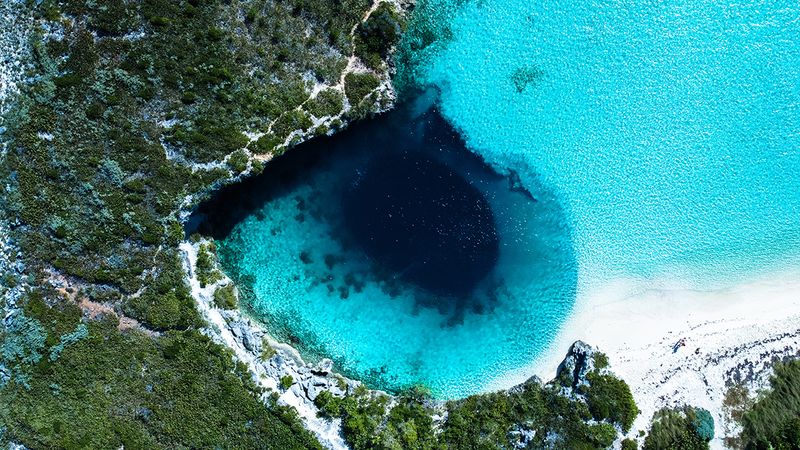
Located in the Bahamas, Dean’s Blue Hole plunges 202 meters into the Earth, a captivating blend of beauty and mystery. Its azure waters conceal secrets that have fascinated divers for years.
Among the discoveries are rare species of fish and unique geological formations, hinting at ancient sea levels. The hole’s clarity provides an unparalleled glimpse into marine life, attracting freedivers and scientists alike.
Despite its allure, the depths demand respect, with sudden currents challenging even the most experienced explorers. Dean’s Blue Hole remains a natural wonder, enchanting those who dare to explore.
The Darvaza Gas Crater
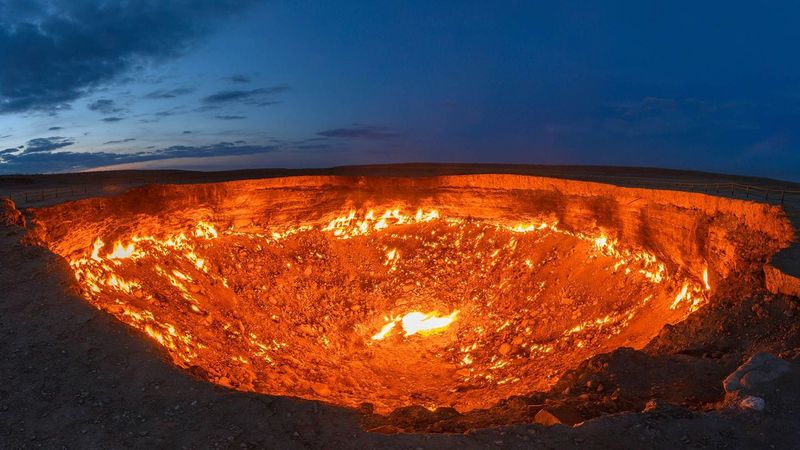
In the heart of Turkmenistan’s Karakum Desert, the Darvaza Gas Crater burns continuously, earning the moniker “Door to Hell.” A geological anomaly, it was accidentally ignited by scientists in 1971 during a drilling operation.
The resulting inferno has persisted for decades, consuming natural gas and captivating onlookers with its eerie glow. Surrounding the crater, the barren desert contrasts with the fiery pit, creating a surreal spectacle.
While scientists study its emissions and impact, the crater serves as a stark reminder of Earth’s volatile nature. A mesmerizing phenomenon, it draws visitors from around the globe.
The Sawmill Sink
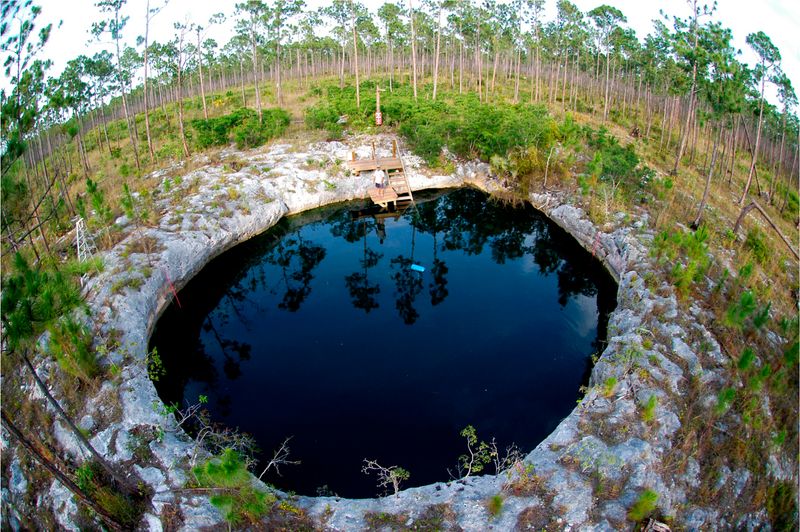
Nestled in the Bahamas, the Sawmill Sink is an underwater time capsule. Archaeologists have uncovered well-preserved animal bones, including those of ancient crocodiles and tortoises, providing insights into a prehistoric world.
The sink’s unique conditions, with layers of salt and fresh water, create an oxygen-deprived environment, preserving organic material remarkably well. This has allowed scientists to study ancient ecosystems in exquisite detail.
Diving into the Sawmill Sink is like stepping back in time, each descent revealing more about Earth’s distant past. A treasure trove for researchers, it continues to unlock secrets with every exploration.
The Great Blue Hole
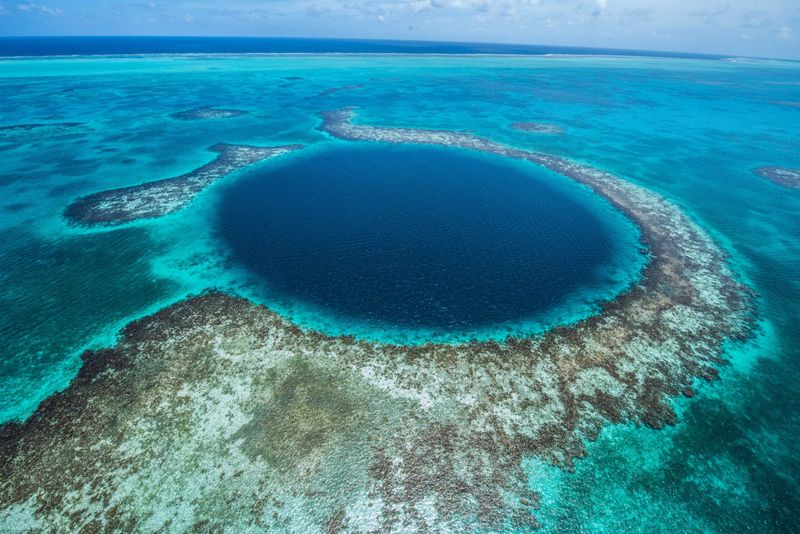
Off the coast of Belize, the Great Blue Hole is a striking natural formation visible from space. This giant marine sinkhole, over 300 meters across, descends 125 meters into the ocean, attracting divers worldwide.
Inside, stalactites tell tales of a time when sea levels were much lower. The hole’s unique ecosystem supports diverse marine life, including reef sharks and vibrant corals.
Recent scientific dives have uncovered new species and deep caves, challenging our understanding of marine biodiversity. The Great Blue Hole remains a coveted destination for adventurers and researchers seeking to uncover its hidden wonders.
The Bingham Canyon Mine
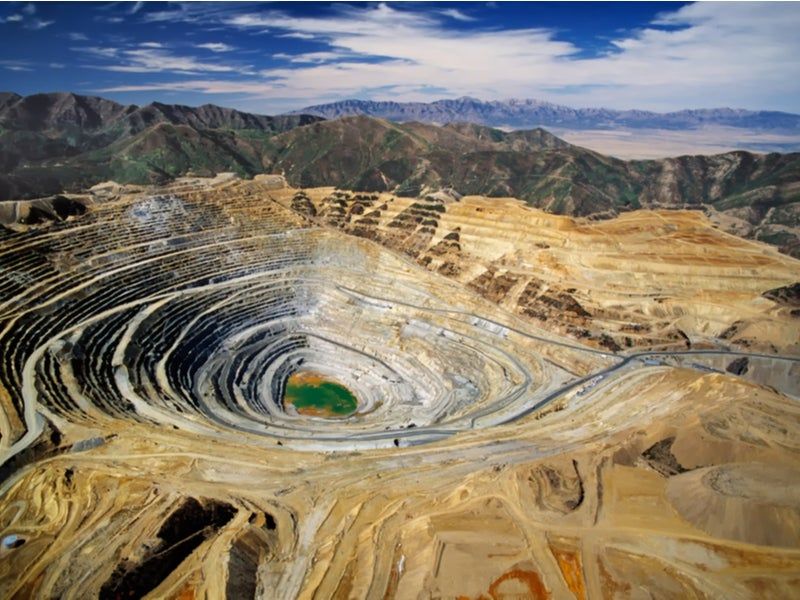
The Bingham Canyon Mine in Utah is the world’s largest man-made excavation. This colossal copper mine, operational since 1906, stretches 4 kilometers wide and 1.2 kilometers deep.
Beyond its economic significance, the mine reveals geological marvels, with layers of rock displaying the Earth’s history. Scientists study these formations to understand mineral deposits and tectonic activity.
While the mine’s scale is impressive, it’s also a reminder of the environmental impact of resource extraction. Efforts to rehabilitate the land show a commitment to sustainable practices, balancing industrial and ecological interests.
The Devil’s Sinkhole

The Devil’s Sinkhole in Texas is a natural wonder steeped in legend. This vertical cavern plunges 122 meters into the Earth, a haven for millions of Mexican free-tailed bats.
Each evening, the bats emerge en masse, a spectacle drawing visitors and researchers alike. The sinkhole’s mysterious depths continue to intrigue scientists, who study its unique ecosystem and geological formation.
The cavern’s history is rich with tales from indigenous cultures, and its preservation is vital for both wildlife and cultural heritage. The Devil’s Sinkhole remains a captivating site, offering glimpses into nature’s complexity.
The Kimberley Diamond Mine
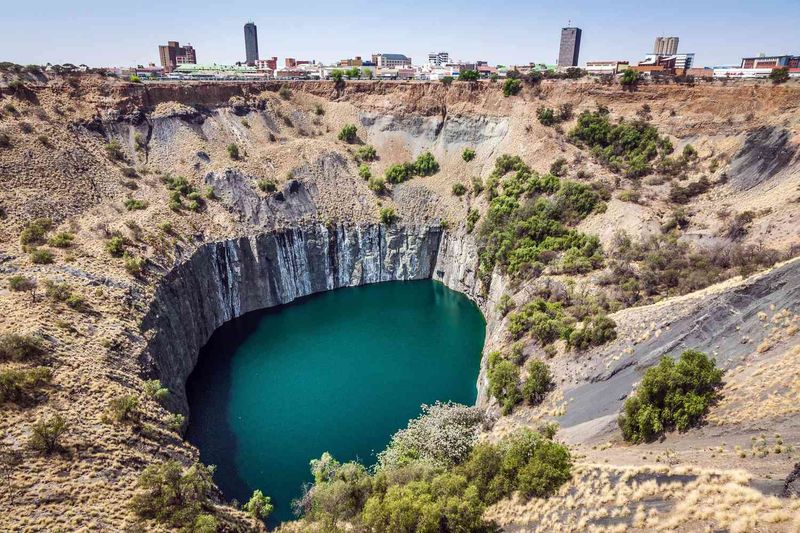
South Africa’s Kimberley Diamond Mine, also known as the “Big Hole,” is a testament to human ambition. Once a massive excavation site, it produced some of the world’s most famous diamonds.
The mine’s depths reveal ancient volcanic pipes, the source of its precious gemstones. These geological formations provide insights into Earth’s volcanic activity and the creation of diamonds.
Today, the site serves as a museum, educating visitors on the history of diamond mining and its broader implications. A symbol of human ingenuity and exploitation, the Kimberley Mine offers a multifaceted glimpse into the past.
The Borexino Detector
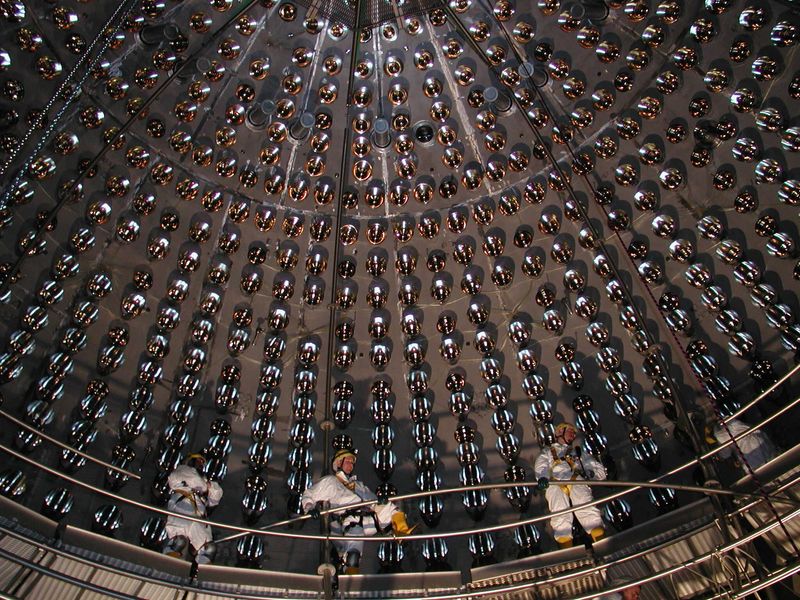
Nestled beneath Italy’s Gran Sasso mountain, the Borexino Detector is not just a deep hole but a window into the universe. This underground laboratory detects neutrinos, elusive particles that offer clues about the sun’s core.
The facility’s location, deep underground, shields it from cosmic rays, allowing precise measurements. Scientists have used Borexino to study solar neutrinos, enhancing our understanding of stellar processes.
This ambitious project highlights the synergy between geology and physics, as Earth’s depths provide the perfect setting for groundbreaking research. A marvel of modern science, Borexino continues to illuminate cosmic mysteries.
The Lake Peigneur Drilling Accident
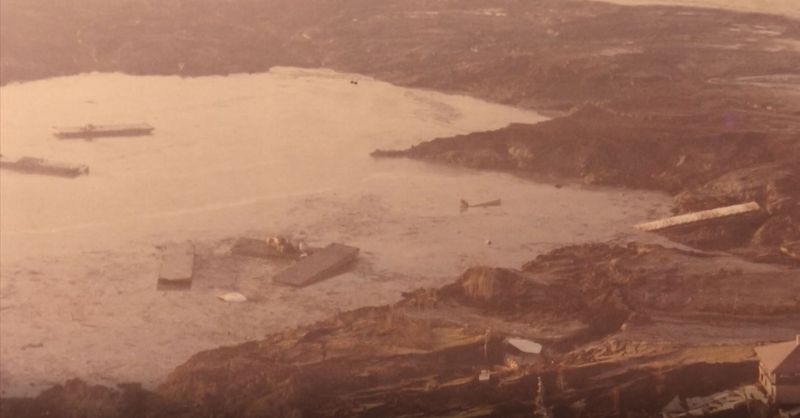
In 1980, Lake Peigneur in Louisiana became the site of a dramatic geological event. A miscalculated oil drilling operation punctured a salt mine below, creating a massive whirlpool.
The lake drained into the mine, swallowing equipment, trees, and even barges, in a surreal spectacle. This accident transformed the lake, altering its salinity and ecosystem permanently.
Today, the event stands as a cautionary tale about human error and nature’s unpredictability. Scientists study the site’s recovery, gaining insights into ecological resilience and adaptation. Lake Peigneur’s story is a testament to nature’s power and unpredictability.
The Diavik Diamond Mine
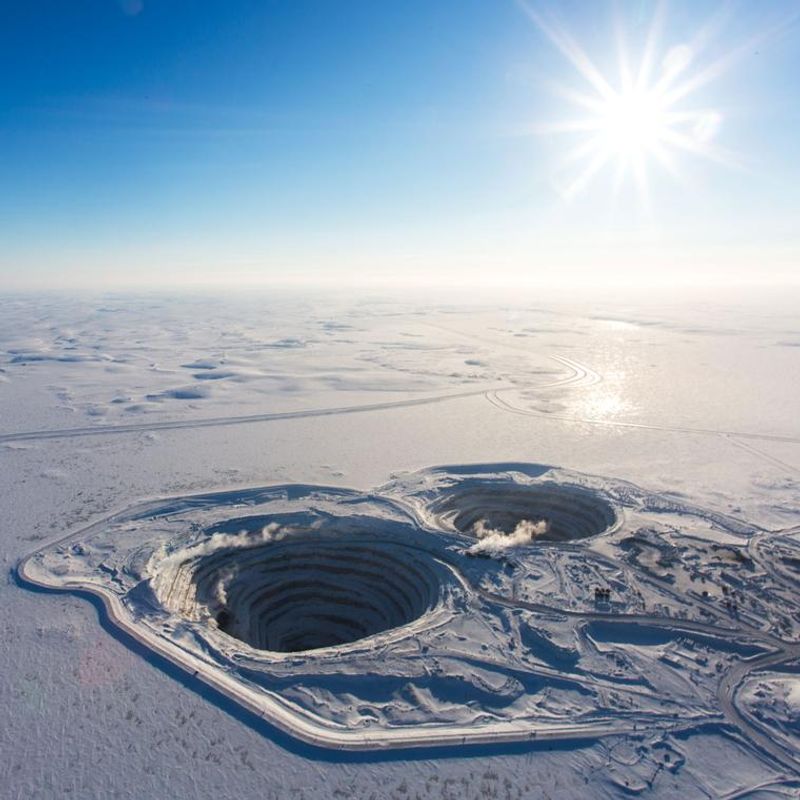
In Canada’s Northwest Territories, the Diavik Diamond Mine is a marvel of engineering amidst the Arctic tundra. This remote site, surrounded by ice and snow, produces some of the world’s most sought-after diamonds.
Beneath its surface lies a wealth of geological information, revealing the ancient processes that formed these precious gems. The mine operates under extreme conditions, showcasing human adaptability and innovation.
Efforts to balance resource extraction with environmental stewardship are evident, as indigenous communities collaborate in sustainable practices. The Diavik Mine stands as a beacon of modern mining, where tradition and technology intersect.
The Berkeley Pit
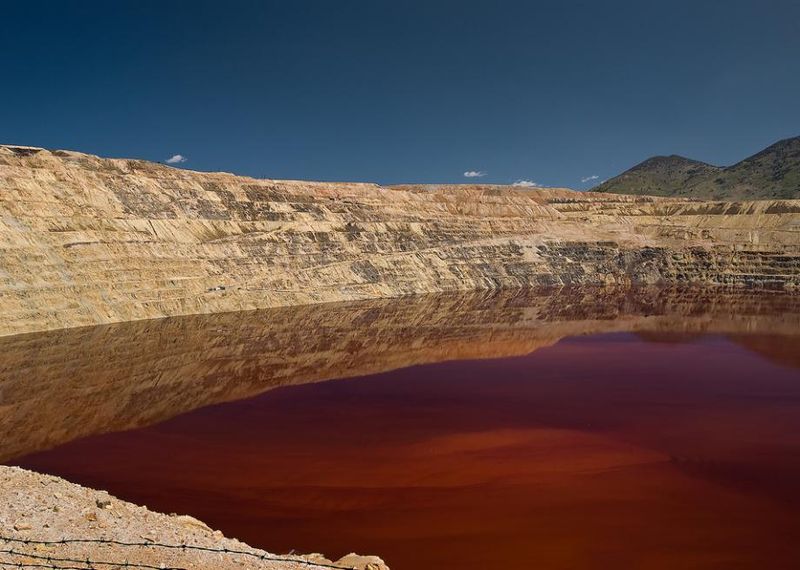
Once a thriving copper mine, the Berkeley Pit in Montana is now a stark reminder of industrial legacy. This massive open pit, filled with acidic water, is a hazardous site teeming with toxic metals.
Despite its grim nature, the pit draws attention for its unique microorganisms that thrive in extreme conditions. Researchers study these life forms, hoping to unlock biotechnological potential.
The pit’s story underscores the environmental cost of mining, prompting discussions on restoration and conservation. Berkeley Pit serves as a poignant example of nature’s resilience and the ongoing quest for ecological balance.
The Mirny Diamond Mine
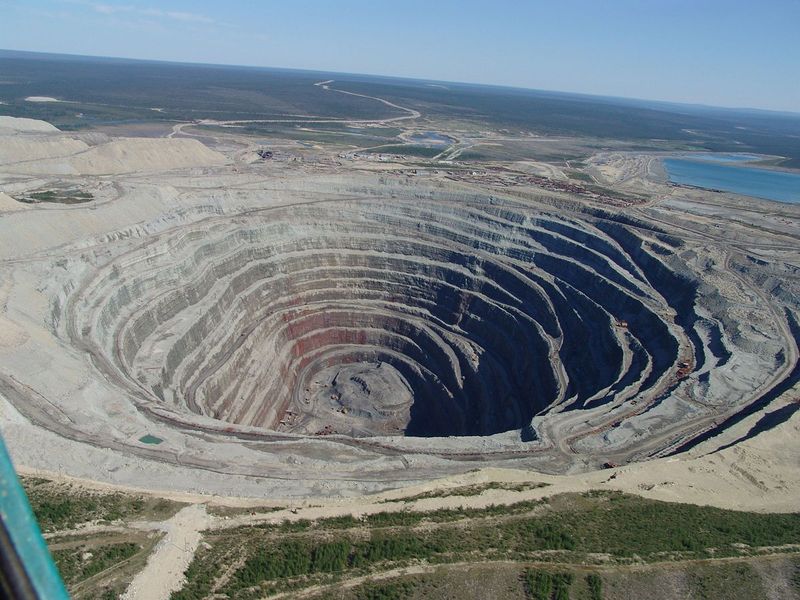
In the icy expanse of Siberia lies the Mirny Diamond Mine, a colossal testament to human endeavor. This gigantic open-pit mine stretches over 525 meters deep, once among the world’s largest.
Its creation unveiled vast reserves of diamonds, fueling Soviet ambitions during the Cold War. The mine’s unique geological formations continue to offer insights into diamond genesis and tectonic movements.
Today, the mine stands abandoned, its vast cavity echoing the grandeur of past exploits. Mirny remains a symbol of industrial might and environmental contemplation, where echoes of history linger beneath the permafrost.
The Dead Sea Sinkholes
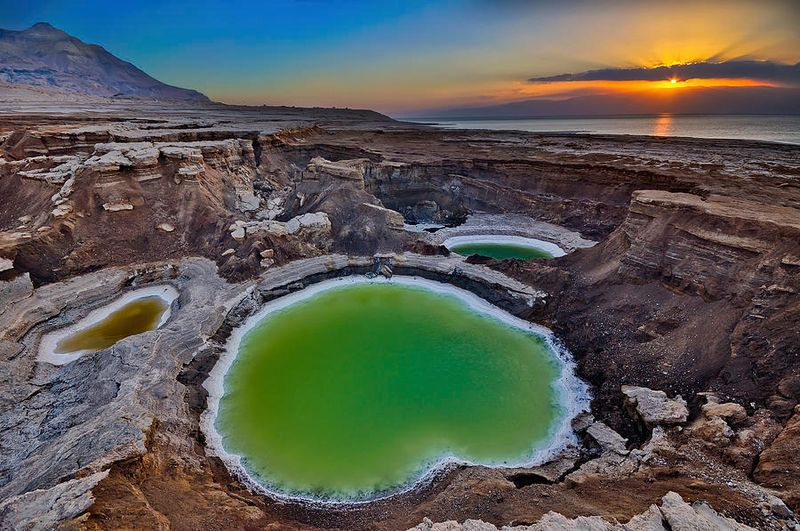
The shores of the Dead Sea, known for their unique mineral-rich waters, are marred by an unexpected phenomenon – sinkholes. These growing voids result from the rapid decline in sea levels and mineral dissolution.
Scientists study these formations to understand their impact on local ecosystems and human settlements. The sinkholes reveal the delicate balance between natural processes and human influence, highlighting environmental challenges.
Efforts to manage and mitigate these effects are underway, aiming to preserve this iconic region. The Dead Sea sinkholes serve as a stark reminder of nature’s unpredictability and the need for sustainable interventions.
The Oak Island Money Pit
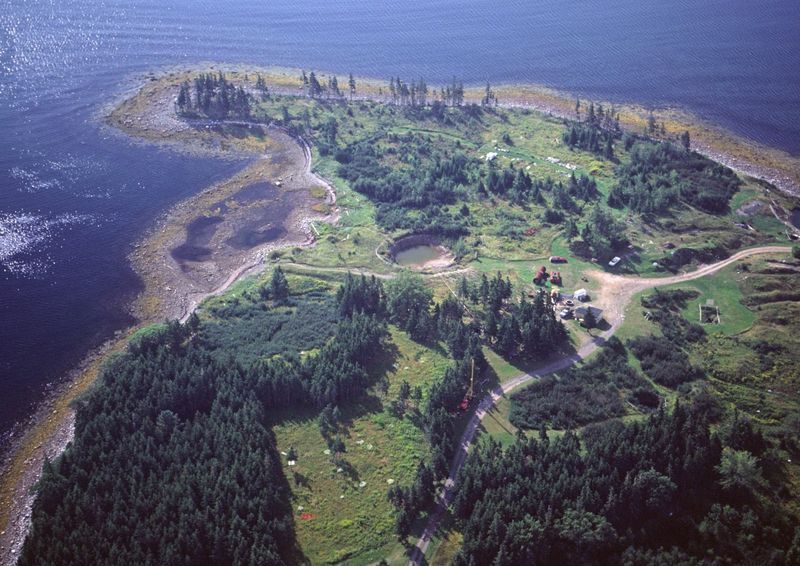
Off the coast of Nova Scotia, Oak Island harbors a tale of intrigue centered around the Money Pit. This infamous excavation site has lured treasure hunters for centuries with promises of hidden riches.
Legends speak of pirate gold and ancient artifacts buried deep within the island’s soil. Despite numerous attempts, the pit’s secrets remain elusive, with flooding and booby traps thwarting efforts.
The island’s allure is fueled by mystery, drawing adventurers and historians alike. Oak Island and its Money Pit epitomize the timeless quest for discovery and the enduring power of legend.
The Cave of Crystals
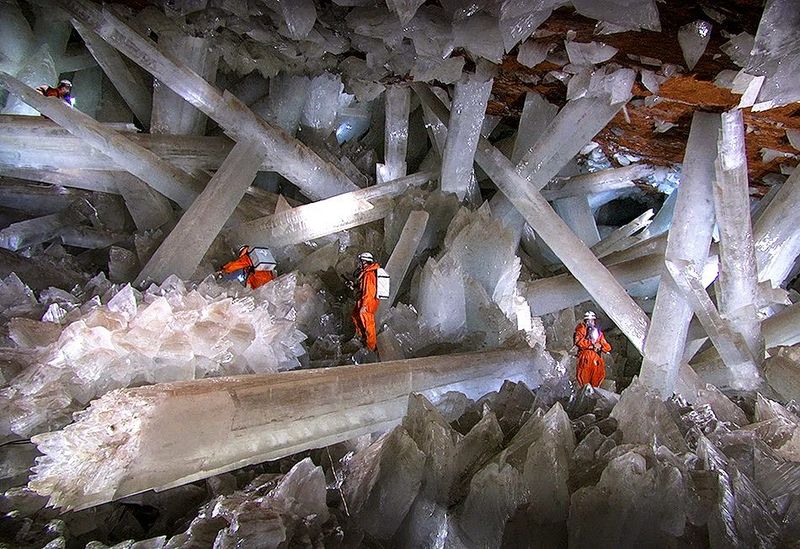
Hidden beneath Mexico’s Naica Mine lies the Cave of Crystals, a subterranean wonderland. This cavern houses some of the largest selenite crystals ever discovered, reaching up to 12 meters in length.
The cave’s extreme conditions, with temperatures over 45°C and high humidity, create a surreal environment where crystals grow undisturbed. Scientists study these formations to understand mineral growth and geochemical processes.
Access to the cave is limited due to its harsh environment, preserving its pristine beauty. The Cave of Crystals stands as a testament to Earth’s hidden marvels and the wonders awaiting discovery.
The Monticello Dam’s Glory Hole
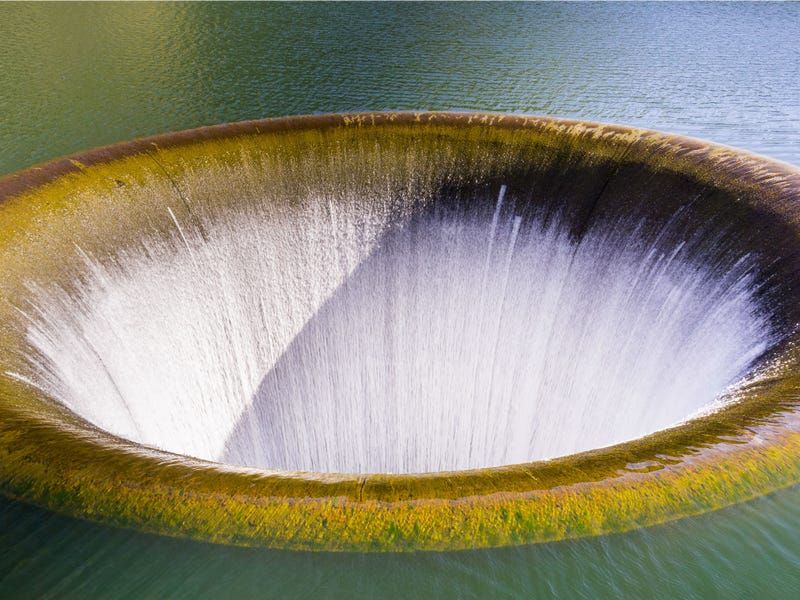
Monticello Dam in California boasts a remarkable hydraulic feature known as the Glory Hole. This enormous circular spillway regulates water levels in Lake Berryessa, creating a captivating vortex.
When operational, the Glory Hole draws photographers and thrill-seekers, its powerful suction a spectacle to behold. Beyond its visual appeal, the spillway exemplifies engineering ingenuity, maintaining reservoir stability during heavy rainfall.
This iconic structure underscores the harmony between human design and natural forces, channeling water with precision. The Glory Hole at Monticello Dam continues to intrigue and inspire, a testament to innovation and nature’s grandeur.
The Mponeng Gold Mine
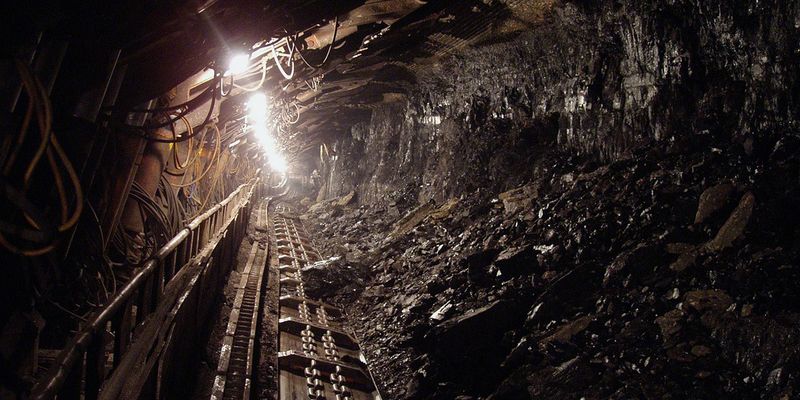
Beneath South Africa’s surface, the Mponeng Gold Mine delves over 4 kilometers into the Earth, one of the deepest in the world. This subterranean colossus yields substantial gold deposits, fueling economic growth.
The mine’s depths harbor unique microbial life, surviving without sunlight, offering insights into extremophiles. Researchers study these organisms to explore possibilities for life beyond Earth.
While the mine exemplifies human achievement, it also highlights challenges in safety and sustainability. Mponeng represents the delicate balance between prosperity and preservation, a beacon of scientific and industrial progress.

